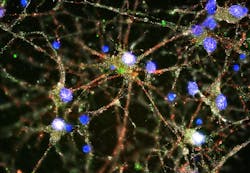DNA Sequencing/Fluorescence Microscopy: Optical techniques help reveal schizophrenia's origins
A combination of optical techniques has helped researchers at the Broad Institute's Stanley Center for Psychiatric Research (Cambridge, MA), Harvard Medical School (Cambridge), and Boston Children's Hospital (Boston, MA) make a major genetic discovery that has important implications for future treatment of schizophrenia.1
Using droplet digital polymerese chain reaction (ddPCR, which incorporates flow cytometry) and two fluorescence imaging techniques (confocal microscopy and structured-illumination microscopy, or SIM), the researchers revealed that risk of schizophrenia increases in people who inherit specific variants of a gene related to synaptic pruning—that is, the elimination of connections between neurons.2
The study involved the collection of DNA from more than 100,000 people, detailed analysis of complex genetic variation in more than 65,000 human genomes, development of an innovative analytical strategy, examination of postmortem brain samples from hundreds of people, and the use of animal models to show that a protein from the immune system called C4 also plays a previously unsuspected role in the brain.
The findings show a causal link to schizophrenia. They also help explain that synaptic pruning is particularly active during adolescence (the typical period of onset for schizophrenia symptoms) and that the brains of patients with schizophrenia show fewer connections between neurons.
While therapies based on the work are years away, the findings raise the possibility that eventual treatments may be able to minimize synaptic pruning in individuals who show early symptoms of the disorder. This would enable a dramatically different approach from current therapies that address only the psychosis associated with schizophrenia and do not treat other symptoms, including cognitive decline.
1. A. Sekar et al., Nature, 530, 177–183 (2016).
2. ddPCR is a trademark of Bio-Rad Laboratories, Inc.
About the Author

Barbara Gefvert
Editor-in-Chief, BioOptics World (2008-2020)
Barbara G. Gefvert has been a science and technology editor and writer since 1987, and served as editor in chief on multiple publications, including Sensors magazine for nearly a decade.
